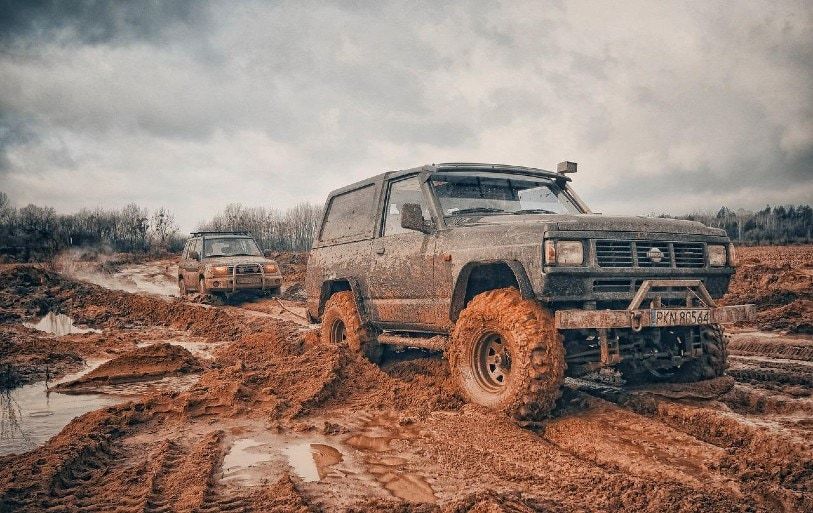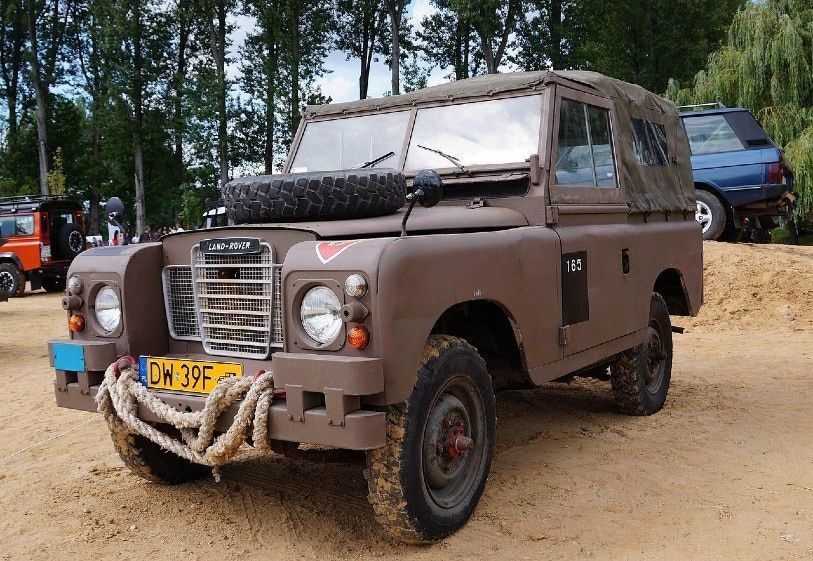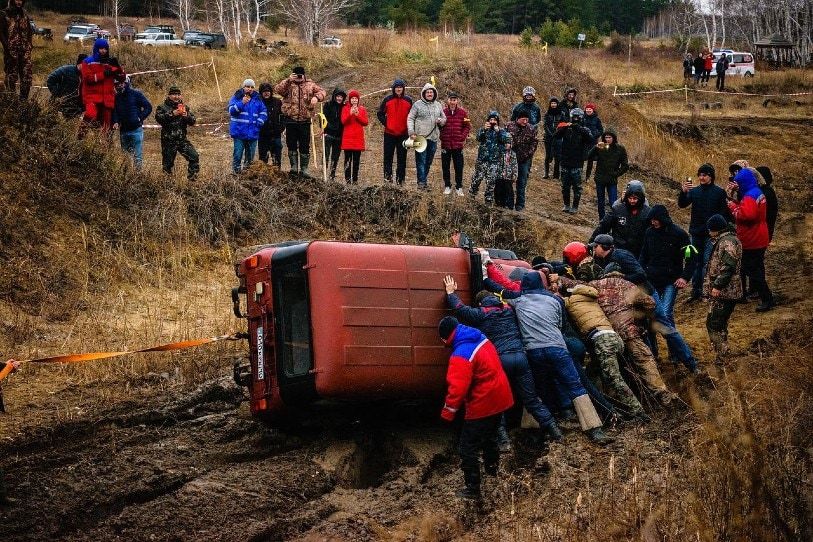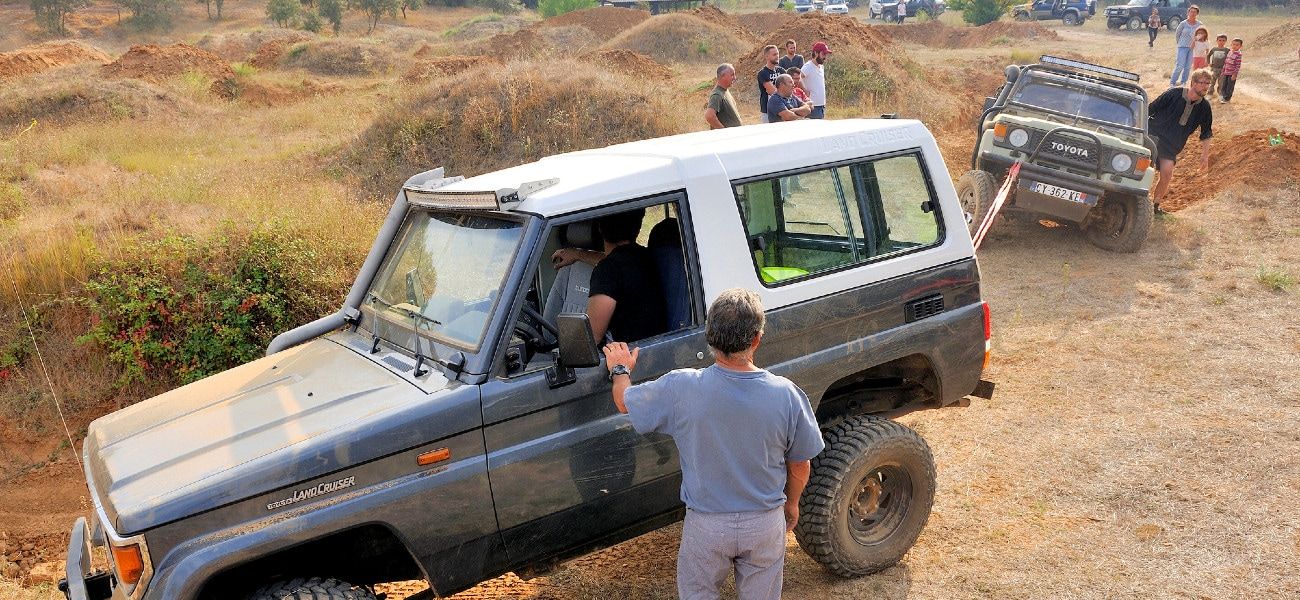Snatch straps are one of the most useful tools you can store in your 4WD.
Anybody who has accidentally bogged down their vehicle will confirm that they’re incredibly helpful. They take up much less space than recovery tracks but can be as effective. The only downside is that you need another vehicle.
In this guide, we’ll look at how to use snatch straps and all you need to know about extra equipment! We’ll consider some important safety aspects too.
Let’s get started!
How do snatch straps work?
Snatch straps work by transferring energy between two vehicles.
The bogged-down vehicle is incapable of moving by itself. The other car pulls away and engages the snatch strap. These special tow ropes stretch up to an extra 20%. This elasticity gives the stuck car more freedom to pull forward.
Kinetic energy passes between the two vehicles and jolts the bogged-down vehicle out of position.
Remember that a snatch strap should have a rating of three times the vehicle’s weight. Therefore if it is 3000kg, you should have a 9000kg snatch strap.

How to use snatch straps?
Follow these steps on how to use a snatch strap. Two vehicles with drivers are required. Check out this visual guide by Super Cheap Auto.
- Attach the snatch strap to the bogged-down vehicle’s rated recovery point. You may need to clear some mud or sand around the wheels with a shovel.
- Next fix the other side of the strap to the rescue vehicle. Ensure that there is slack between the two. The strap should lie on the floor in a snake-like fashion so that there’s room for it to stretch.
- Place the dampener on the middle of the strap.
- Ensure that everybody is at a safe distance in case the strap snaps.
- The stuck driver should engage first gear. Meanwhile, the rescue driver should select second gear.
- After communicating with each other, the rescue driver should slowly pull off. This will stretch the snatch strap, generating tension.
- As the strap rebounds and snatches the stricken vehicle, the bogged-down driver should accelerate forward in synchronization with the rescue car.
- If it doesn’t work the first time, repeat the process. It may be necessary to clear the vicinity of obstructions.
- When the vehicle is free, disconnect the snatch strap. Clean it before rolling it up neatly and stowing it safely away.
How to attach snap straps
Remember that it’s crucial to attach the snatch straps to a rated recovery point.
Never attach them to the towbar because this will end badly. The tension may even snap off the bar. In the best-case scenario, this will only damage the vehicle.
However, it also turns the towbar into a dangerous airborne object that could seriously injure someone.

Do you need to use a dampener?
A dampener is an essential piece of kit when using snatch straps.
If the snatch strap becomes loose, it will reduce the tension and absorb some of the energy. This is because the dampener weighs the strap down. This reduces the risk of the strap flying away if it snaps.
Hopefully it will never be required but it’s an important safety feature nevertheless.
Any decent recovery kit with a snatch strap will include a dampener as well.
Things to be careful of when using snatch straps
Most snatch-strap related problems occur because the user didn’t attach them to a rated recovery point.
We must stress that you should never fix it to a towbar or another unrated point. Otherwise, it will become a potentially lethal projectile. Ensure that the straps are strong enough for your vehicle so that there is less chance of them snapping.
Always use a dampener too because this reduces the dangerous effects in the worst case.
Driver-to-driver communication is important. Ideally, both drivers should use radios to speak to each other. This may not always be possible so some other form of the signal should be agreed upon. Maybe they can beep the horn several times in succession.
Alternatively, a third person can stand at a safe distance and direct them both.
Finally, after completing the recovery, clean the straps to ensure they don’t rot. Don’t leave them out in the sun because they’ll suffer UV damage. Make sure that they’re not frayed because then they’re not safe to use.

Final Thoughts
Every off-roader should keep snatch straps in their vehicle.
They’re useful, even if you have recovery tracks because of their effectiveness. Remember to look after your snatch straps and they’ll look after you. Don’t underestimate the importance of safety because of the risks involved.
It’s also advisable to keep a small shovel in your SUV or ute because it can make it easier to clear the area around the wheels if necessary.
If you have any questions about snatch straps, please leave a comment below.



